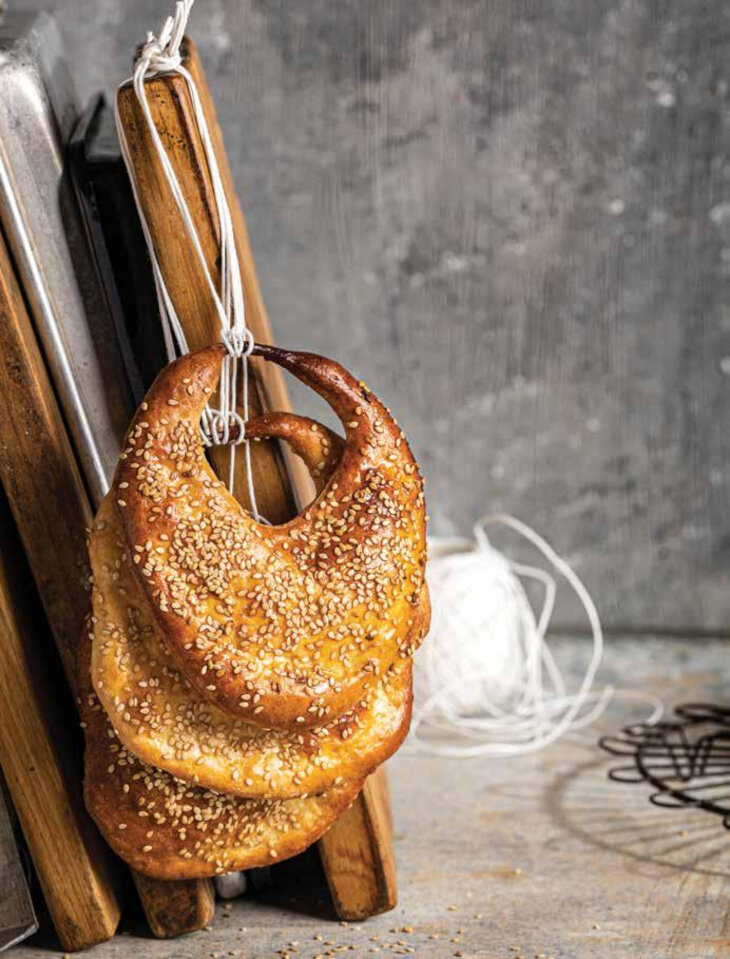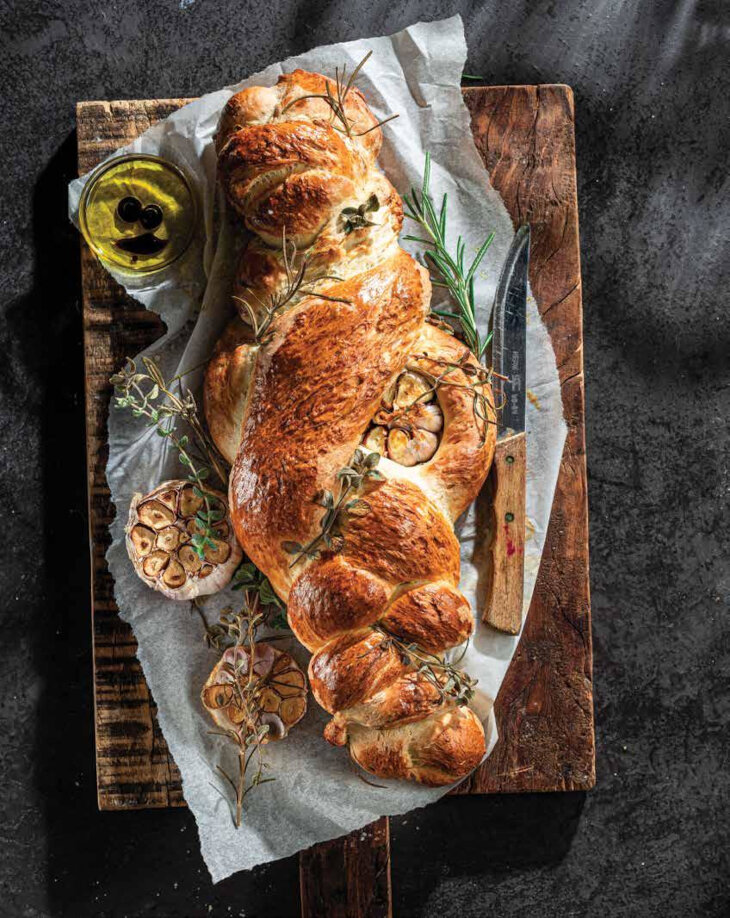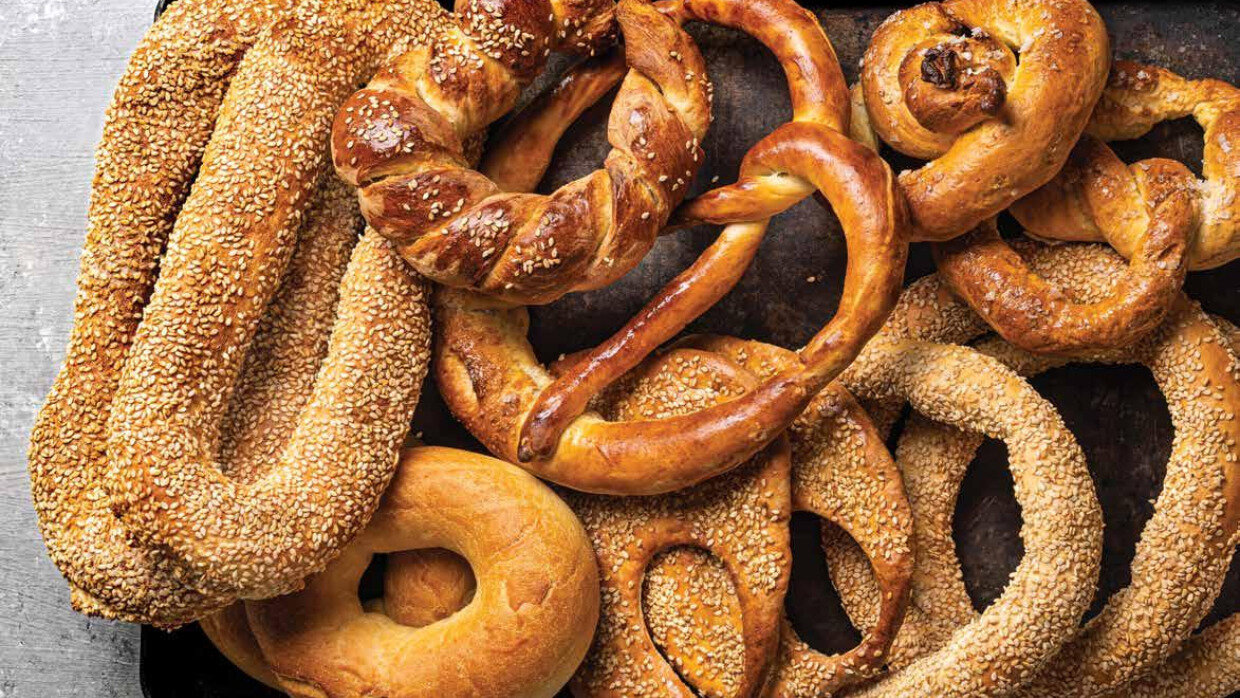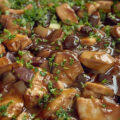You can always be sure there’s a cart piled high with “beigele ham” (hot bagel) outside of any theater, football stadium or hospital in Israel, a vendor announcing his wares in a booming voice and a steady stream of customers.
These circular plaits encrusted with za’atar or sesame seeds are similar to Simit, a Turkish-style bagel found on every street corner in Istanbul and brought here during the Ottoman era. It’s also one of the 60 different bagel recipes found in Ronit Tsin-Karsenti’s newly published book, aptly named Beigele (in Hebrew).
“Every country seems to have its own version,” she enthuses in our interview.
This is proved in the “Bagels around the world” chapter of her book which lists countries as diverse as Germany, Greece, Romania and Iraq. Also included are New York and Montreal, two cities which have their own iconic variety.
Childhood inspiration
The idea of writing about beigele came to Tsin-Karsenti, ironically through her work as an artisanal candy maker. “As a confisier I deal a lot with the taste of childhood. Often people tell me that when they taste my candies they shed tears of longing and it brings back forgotten memories. Beigele in Israel have the same effect. Everyone here has some memory related to them.”
View this post on Instagram
This can be as simple, she says, “as a memory of dipping a pretzel snack into cottage cheese, making a bagel toast with lots of toppings or eating the large round Jerusalem bagel with sesame coating.”
Tsin-Karsenti’s own story starts off with the gas station her father owned in Netanya. “He invested his all into it for over 40 years and it was part of our home from my childhood to adulthood and who I am today.” The connection to beigele took place during a monthly ritual she had with her mother when going to the center of town to deliver bills to customers paying on credit.
“We would go early in the morning on the first day of every month and our first stop was always to the bakery on Stamper Street. In the center of it stood a large steaming taboon oven made of stone from which a constant supply of beigele and pita would emerge. We would always choose the one sprinkled with salt and divide it between ourselves. I liked the thick chewy section and mom liked the part with the salt which today I realize is actually the tastiest!”
The bakery has long since closed but every time Tsin-Karsenti passes the spot where it once stood she feels a “small twinge of longing” in her heart.
Origins of the bagel
As a former journalist and researcher at Israel’s channel 12 TV station, Tsin-Karsenti enjoyed digging into bagel history as there are many different versions as to its origin.
One of the most famous accounts, she writes in the book, is that the bagel was created in 1683 as a stirrup shaped tribute to the Polish King Jan Sobieski after the victorious Battle of Vienna.
Another idea is that its origins lie in Jewish communities of the 13th Century who lived in areas which are today in Poland. Anti-Semitic laws restricted their trading activities, but Jews were permitted to sell boiled bread to their neighbors. Smaller than Obwarzanek, a type of large bagel that is still made in Krakow today, it was named bagel, a corruption of the Yiddish word ‘beygn’, meaning ‘to bend’.
Culturally, the bagel played an important part in the life of the Jewish community in Poland as it was the first food given to a woman after giving birth and common to eat during shiva or days of mourning.

During her research Tsin-Karsenti also discovered new bagel varieties such as the flat, thin Lebanese bagel which has a large hole near its top section through which a string is hung. “I had never seen one before but it’s become one of my favorites as it looks like a small handbag or a necklace,” she shares.

Tsin-Karsenti also adds her own creativity to the bagel experience. Examples are pretzel rolls with jalapeño that encircle a melted cheddar dip and bagels stuffed with artichoke and smoked cheese. There is also a bagel challah with a pocket for holding a garlic flower sliced in half that caramelizes during baking. This she makes for special occasions and hosting as it is especially beautiful. The challah strands are dipped into water sweetened with honey before baking which gives it a crunchy crust on the outside and a soft inside.
The book also contains a section of how to use salty pretzels in sweet items. “Salt actually makes sweets shine, balances the taste and gives it crunch,” she explains. Both her recipes for Rocky Road and Caramel fudge contain shards of salty pretzels, while brownies have them on top for crunch and as a decoration.
What’s the connection between the pretzel and bagel?
The main similarity between the pretzel and bagel (both called beigele in Hebrew) stem from the type of dough they are made from. “The dough used in both are relatively low in fluids and this creates a sturdier dough which enables them to be boiled before baking. Bagels are cooked in plain or water sweetened with sugar or honey which will give them color after baking and a delicate sweet taste, while pretzels are boiled in water containing baking soda which gives them their particular taste, shine and texture.”
“My book isn’t just about recipes. It encompasses the whole world of the bagel,” Tsin-Karsenti enthuses. She couldn’t be more correct.

















